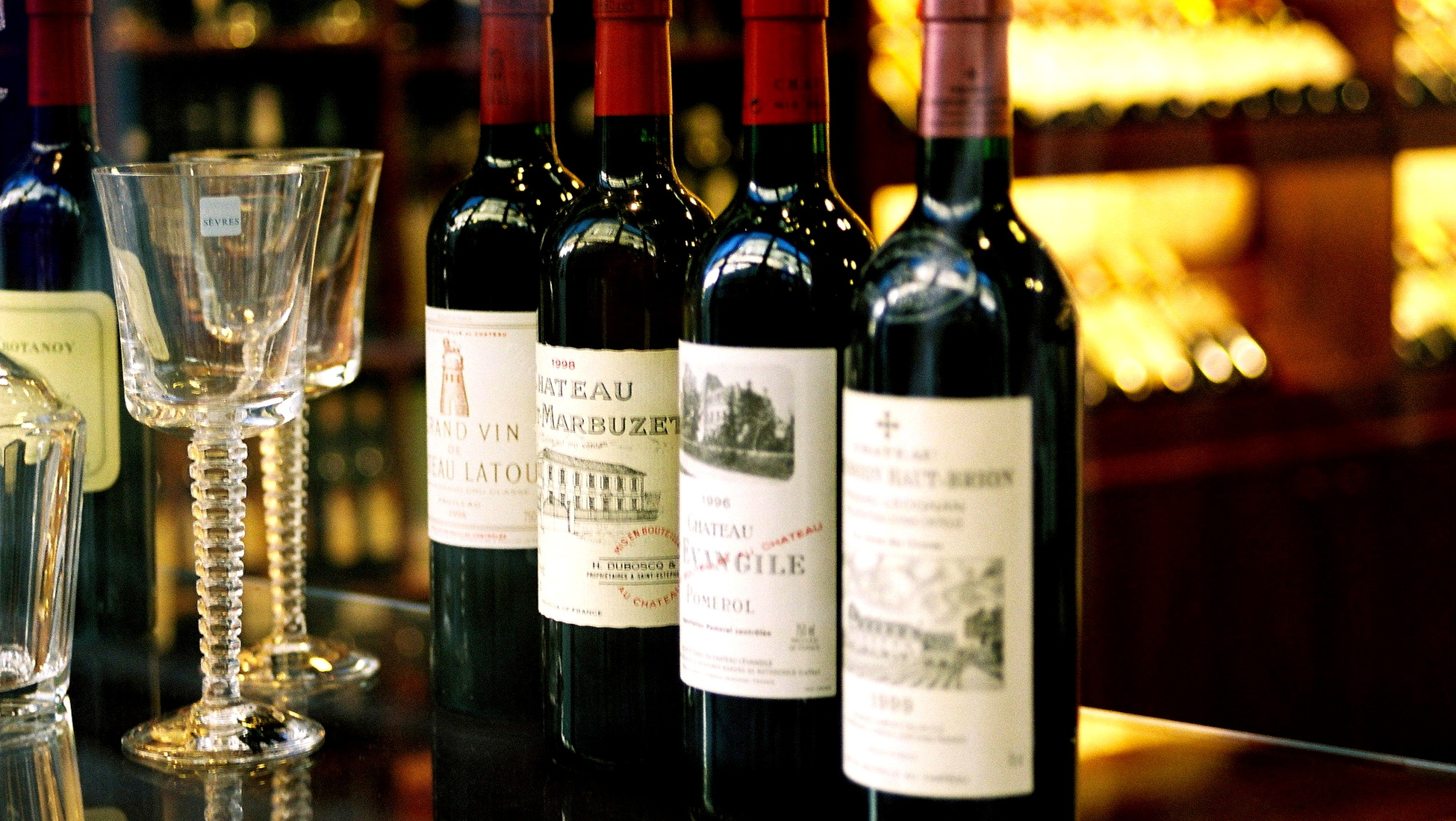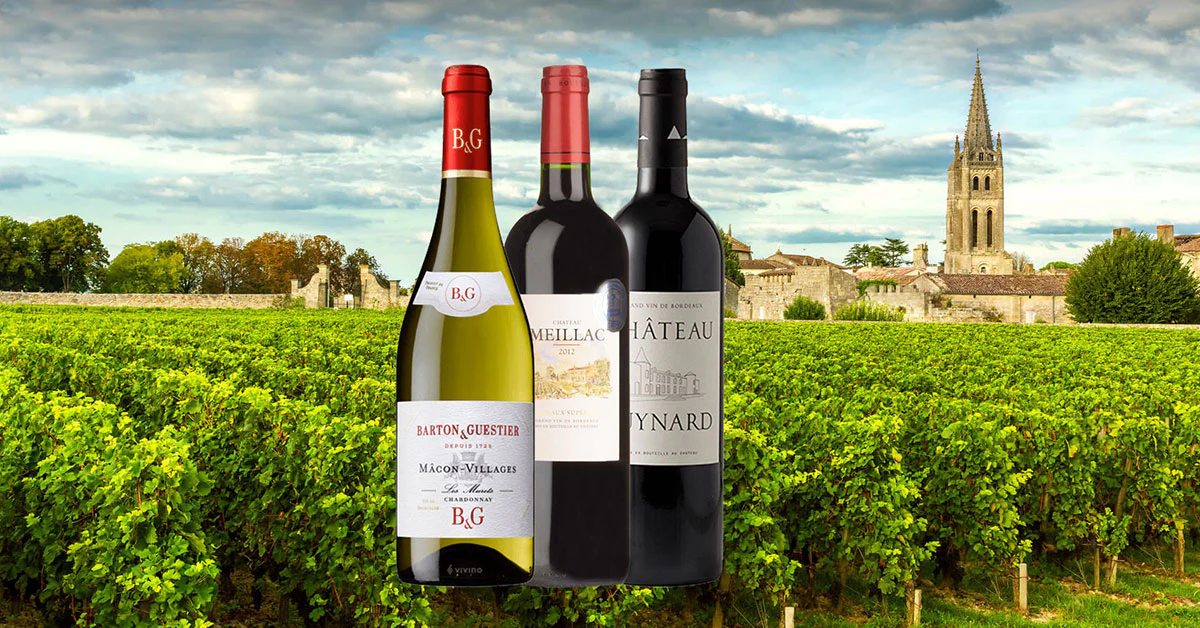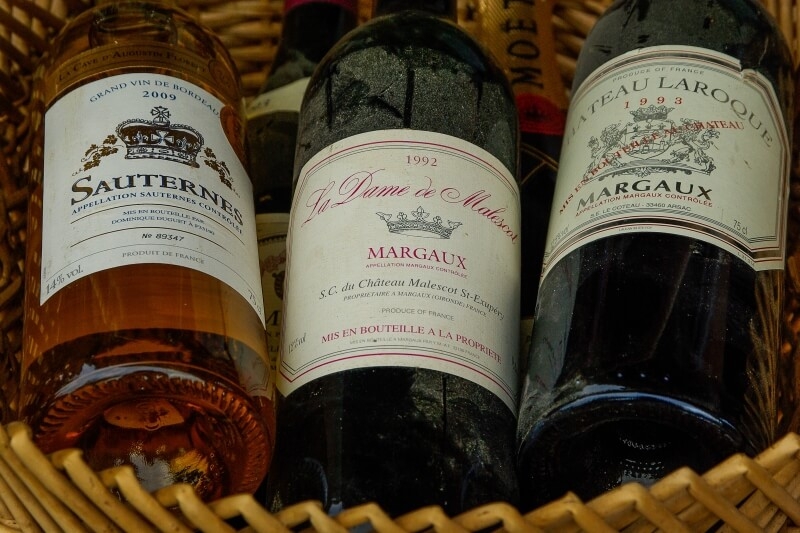Bordeaux stands as the crown jewel of the wine world, a region where history, tradition, and exceptional terroir converge to create some of the most celebrated wines on Earth. Located in southwest France, this legendary wine region has been producing extraordinary wines for nearly two millennia, establishing itself as the largest wine-producing area in France and a global benchmark for quality winemaking.
The story of Bordeaux wine begins with the Romans, who introduced viticulture to the region in the mid-1st century CE, initially to provide wine for local consumption. However, it was the marriage of Henry Plantagenet and Eleanor of Aquitaine in 1152 that truly launched Bordeaux onto the world stage, opening English markets to these exceptional wines and creating a trade relationship that would span centuries. This historical connection gave birth to the term “claret,” the English name for red Bordeaux that remains popular today.
What makes Bordeaux truly remarkable is its incredible diversity. The region produces predominantly red wines—over 90% of its output—crafted from noble grape varieties including Cabernet Sauvignon, Merlot, Cabernet Franc, Petit Verdot, and Malbec. Yet Bordeaux also creates exceptional white wines, from crisp dry varieties to the world-renowned sweet wines of Sauternes, demonstrating the region’s versatility and the skill of its winemakers. This diversity, combined with distinct terroirs and centuries of refinement, has established Bordeaux as the ultimate expression of French winemaking excellence.
The Geography and Terroir of Bordeaux

Bordeaux’s unique geography plays a fundamental role in shaping its wines’ character and quality. The region is naturally divided by the Gironde Estuary into two distinct areas: the Left Bank and Right Bank, each offering dramatically different terroirs and wine styles.
The Left Bank, encompassing the Médoc and Graves regions, is renowned for its gravelly soils that provide excellent drainage and heat retention. This terroir favors Cabernet Sauvignon, which thrives in these conditions to produce wines with remarkable structure, tannins, and aging potential. The Left Bank includes some of Bordeaux’s most prestigious appellations, including Pauillac, Margaux, Saint-Julien, and Saint-Estèphe. These wines typically exhibit graphite-driven characteristics with dominant flavors of black currant, cedar, and violet, creating bold, tannic wines perfect for long-term cellaring.
The Right Bank, centered around the city of Libourne, features clay-rich soils that are ideal for Merlot cultivation. This area includes the famous appellations of Saint-Émilion and Pomerol, producing wines known for their rich, velvety character and softer tannins. Right Bank wines often display greater fruit concentration and approachability in their youth, making them excellent introductions to Bordeaux wines.
The Entre-Deux-Mers region, situated between the Garonne and Dordogne rivers, primarily focuses on white wine production, particularly dry whites made from Sauvignon Blanc, Sémillon, and Muscadelle grapes. This diverse geography ensures that Bordeaux can produce wines suited to every palate and occasion.
Bordeaux Grape Varieties and Wine Styles

Understanding Bordeaux requires familiarity with its six primary grape varieties, each contributing unique characteristics to the region’s legendary blends. Cabernet Sauvignon forms the backbone of Left Bank wines, offering structure, tannins, and complex flavors of dark fruit, cherry, and tobacco. This grape’s ability to age gracefully for decades makes it essential for Bordeaux’s most prestigious wines.
Merlot dominates Right Bank production and serves as a crucial blending component throughout Bordeaux. More approachable than Cabernet Sauvignon, Merlot provides plush fruit flavors and softer tannins, creating wines with immediate appeal while maintaining aging potential. The Right Bank produces more high-end Merlot than anywhere else in the world.
Cabernet Franc adds elegance and complexity to Bordeaux blends, contributing higher acidity and distinctive herbal notes. Remarkably, this grape is a parent variety to both Cabernet Sauvignon and Merlot, making it fundamental to Bordeaux’s genetic heritage.
Petit Verdot serves as a blending grape, adding deep color, tannin structure, and spice notes to enhance the final wine. While rarely used as a standalone variety due to its intense tannins, it plays a crucial role in adding complexity to premium blends.
Malbec was historically the dominant grape in the Médoc until the early 19th century, when Cabernet Sauvignon replaced it. Today, it contributes dark color and robust tannins to traditional blends, though it has found greater success in Argentina’s warmer climate.
Carménère, one of the oldest winemaking grapes, nearly disappeared from Bordeaux due to climate challenges but has been revived in Chile, where it thrives as that country’s national wine.
Bordeaux Classifications and Quality Levels

Bordeaux’s classification systems provide essential guidance for understanding quality levels and wine styles. The most famous is the 1855 Classification, which ranked châteaux in the Médoc, Sauternes, Barsac, and Graves regions. This classification, created for the Paris Exposition, established five growth levels (crus) and remains largely unchanged today, with the five First Growths representing the pinnacle of Bordeaux achievement.
Saint-Émilion operates under its classification system, established in 1955 and most recently revised in 2022. This system recognizes the unique characteristics of Right Bank wines and provides consumers with quality indicators specific to this terroir.
Beyond these prestigious classifications, Bordeaux produces wines at various quality levels. Bordeaux AOC and Bordeaux Supérieur AOC wines represent the regional appellations, offering excellent value and accessibility. These wines, often Merlot-dominant and produced for early consumption, account for 55% of all Bordeaux wines sold globally.
Côtes de Bordeaux wines occupy a middle ground between basic Bordeaux and the prestigious Left and Right Bank appellations, offering excellent quality at moderate prices. These wines typically feature Merlot-dominant blends and provide outstanding value for consumers seeking authentic Bordeaux character without premium pricing.
Modern Bordeaux: Innovation and Tradition
Contemporary Bordeaux demonstrates remarkable innovation while respecting traditional winemaking principles. The past decade has witnessed significant investment in both vineyards and cellars, resulting in continuously improving quality across all price points. New reforms implemented in 2008 by the Bordeaux and Bordeaux Supérieur Winemakers’ Association have further enhanced standards and consistency.
Climate change has prompted adaptations in vineyard management and winemaking techniques, with producers experimenting with sustainable practices and precision viticulture. Despite these modern approaches, Bordeaux winemakers remain committed to expressing their unique terroirs and maintaining the region’s distinctive character.
The global appeal of Bordeaux continues to grow, with 67% of production consumed domestically and 33% exported worldwide. This represents a 9% increase in exports, demonstrating the international market’s continued appreciation for Bordeaux wines. The statistic that 14 bottles of Bordeaux and Bordeaux Supérieur are consumed every second worldwide illustrates the region’s remarkable global reach.
Bordeaux represents the ultimate expression of winemaking artistry, where centuries of tradition meet modern innovation to create wines of unparalleled quality and character. From the gravelly soils of the Left Bank producing structured Cabernet Sauvignon-based wines to the clay-rich Right Bank crafting elegant Merlot blends, Bordeaux offers diversity that satisfies every wine lover’s preferences.
The region’s classification systems, diverse terroirs, and commitment to quality ensure that Bordeaux will continue to set global standards for fine wine production. Whether seeking an approachable regional Bordeaux for everyday enjoyment or a prestigious classified growth for special occasions, wine enthusiasts can trust in Bordeaux’s unwavering dedication to excellence. As this legendary region continues to evolve while honoring its remarkable heritage, Bordeaux wines remain the gold standard by which all other wines are measured.


